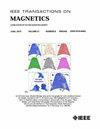Brushless Wound Field Synchronous Generator Design With an Optical Power Transfer
IF 1.9
3区 工程技术
Q3 ENGINEERING, ELECTRICAL & ELECTRONIC
引用次数: 0
Abstract
Rare-Earth permanent magnet-based generators offer high power density, but face challenges due to their inability to deactivate the magnetic field during failures. Wound field synchronous generators (WFSGs) have gained attention as a solution to these issues, but mechanical brushes negatively impact reliability. To address this, wireless power transfer (WPT)-based WFSGs have been proposed for their enhanced reliability, though they require low airgap passive components that hinder high-speed operation. This article presents the design and optimization of optical power transfer (OPT)-based WFSGs using photovoltaic (PV) cell excitation. The design constraints were calculated considering PV cell characteristics at maximum power point (MPP), and a finite element analysis (FEA) was conducted to analyze the characteristics of the OPT-based WFSG. Three cases were analyzed: constant optical power, constant output power, and high-speed operation. The optimal WFSG designs for efficiency and power density are identified by analyzing core and copper losses, which are calculated based on the WFSG designs and their respective design constraints. Furthermore, a feasibility study on high-speed operation explores the relationship between optical power and speed for maintaining consistent output power.具有光功率传输的无刷绕线场同步发电机设计
基于稀土永磁的发电机提供高功率密度,但由于在故障期间无法停用磁场,因此面临挑战。绕线磁场同步发电机(WFSGs)作为解决这些问题的方法得到了人们的关注,但机械电刷会对可靠性产生负面影响。为了解决这个问题,基于无线电力传输(WPT)的WFSGs被提出用于增强可靠性,尽管它们需要低气隙无源元件,从而阻碍高速运行。本文介绍了利用光伏电池激励的基于光功率传输(OPT)的WFSGs的设计与优化。考虑光伏电池在最大功率点(MPP)的特性,计算了设计约束条件,并对基于opt的WFSG进行了有限元分析。分析了恒定光功率、恒定输出功率和高速运行三种情况。通过分析磁芯损耗和铜损耗,确定了最优的WFSG效率和功率密度设计,并根据WFSG设计及其各自的设计约束计算了损耗。此外,在高速运行的可行性研究中,探讨了光功率与速度之间的关系,以保持输出功率的一致性。
本文章由计算机程序翻译,如有差异,请以英文原文为准。
求助全文
约1分钟内获得全文
求助全文
来源期刊

IEEE Transactions on Magnetics
工程技术-工程:电子与电气
CiteScore
4.00
自引率
14.30%
发文量
565
审稿时长
4.1 months
期刊介绍:
Science and technology related to the basic physics and engineering of magnetism, magnetic materials, applied magnetics, magnetic devices, and magnetic data storage. The IEEE Transactions on Magnetics publishes scholarly articles of archival value as well as tutorial expositions and critical reviews of classical subjects and topics of current interest.
 求助内容:
求助内容: 应助结果提醒方式:
应助结果提醒方式:


